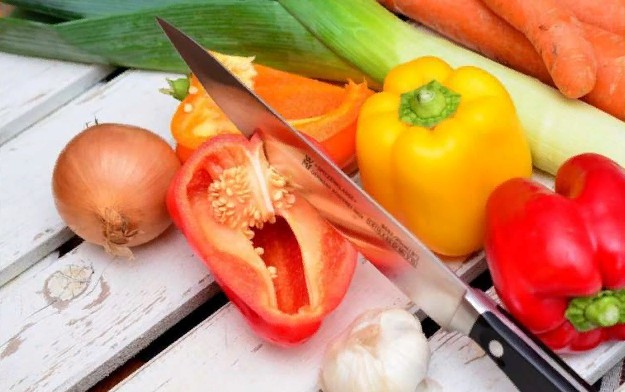According to experts, giving people money to buy fruit and vegetables could make them eat more of them by up to 15%
According to a new study, fresh fruit and vegetables have high fixed costs, which means they cost 40% more than they should, compared to unhealthy alternatives, which trade close to marginal cost.
According to the research, introducing a subsidy to counteract price distortion and lower the cost of fruits and vegetables will alter diets in a way that is not only healthier, but also more in line with what consumers prefer to eat.
The study by economists at the University of Warwick, which was published today in Science Advances, aimed to quantify pricing distortions in fruit and vegetables due to market inefficiencies, as well as their impact on our diets.
Fixed expenses in the supply chain have a far higher impact in the price of fruit and vegetables than in the pricing of other commodities, according to the economists, distorting the relative price by at least 40%. Because of the high pricing, people buy 15% fewer fruits and vegetables than they would if they were sold at marginal cost.
This underconsumption is attributable to a market flaw: fixed costs prohibit the market’s ‘invisible hand’ from allocating more fruits and vegetables to customers, which both consumers and producers would want.
A third of the discrepancy between the average amount of fruit and vegetables consumed and the recommended intake is attributable to 15% underconsumption of fruits and vegetables due to retail market inefficiencies.
One of the article’s authors, Professor Thijs van Rens, is also the director of the Warwick Obesity Network, which develops evidence-based policy and practitioner briefs to support a national obesity strategy.
“The food retail sector is quite competitive,” he continued, “so you would expect food to be sold close to marginal cost if there were no fixed costs.” The fact that they aren’t has an impact on diets.
“When a product’s price rises, people are less likely to buy it. The question is, how much will it increase? We discovered that if the market worked properly, customers would buy 15% more fruits and vegetables than they do now, resulting in a significant increase in public health.
“There is something wrong with the market, which is that the provision of fruits and vegetables has a large fixed cost. As a result, prices are excessively high and consumption is insufficient. Worse, when demand is low, the effect is stronger.
And in areas where people are destitute, demand is low. As a result, this market failure not only makes us all sicker, but it also raises health disparities.”
A product’s shelf price includes fixed costs connected with its production and delivery. Fruit and vegetables have particularly high fixed costs because to their perishability, which necessitates more frequent restocking.
Fresh produce prices rise as a result of this, compared to other, less healthy goods, which are marketed at or near their marginal cost.
The economists studied the consumption behavior of households with varying incomes, residing in communities with varying average income levels, to see how this affects consumers’ fruit and vegetable purchases.
They used data on food purchases in the United States from the NielsenIQ Homescan dataset, which contains detailed information about quantities and prices of food purchases from about 60,000 households between 2004 and 2014, to determine how much a consumer’s price for fruit and vegetables varies due to their preferences for quantity and quality of fruits and vegetables, and how much is due to fixed costs.
Economists propose for a 25% subsidy on fruits and vegetables to promote consumption and make our diets healthier. According to estimates, UK supermarkets sold £10.4 billion worth of fresh produce in 2017, therefore a subsidy would cost the government £2.5 billion every year.
In 2014/15, the NHS spent £6.1 billion on overweight and obesity-related illness, with a potential expenditure of £9.7 billion by 2050, while the entire cost of obesity to society is projected at £27 billion.
“Taxing and subsidizing to combat obesity has been politically infeasible for some time, but it shouldn’t be any longer,” Professor Van Rens says. Obesity is a major public health issue that will not be solved with a few modifications.
Subsidies and taxes are the main guns we need to pull out. In some ways, a subsidy is the most market-based, least intrusive policy you can imagine. Anything less is just kind counsel, and it won’t get us to where we need to go.
“There is no doubt that subsidizing fruit and vegetable eating would increase consumption. Our research’s key contribution is to demonstrate that the market is already so distorted that this subsidy will benefit every consumer in the economy.”
Science Advances will publish “How Distorted Food Prices Discourage a Healthy Diet.”





